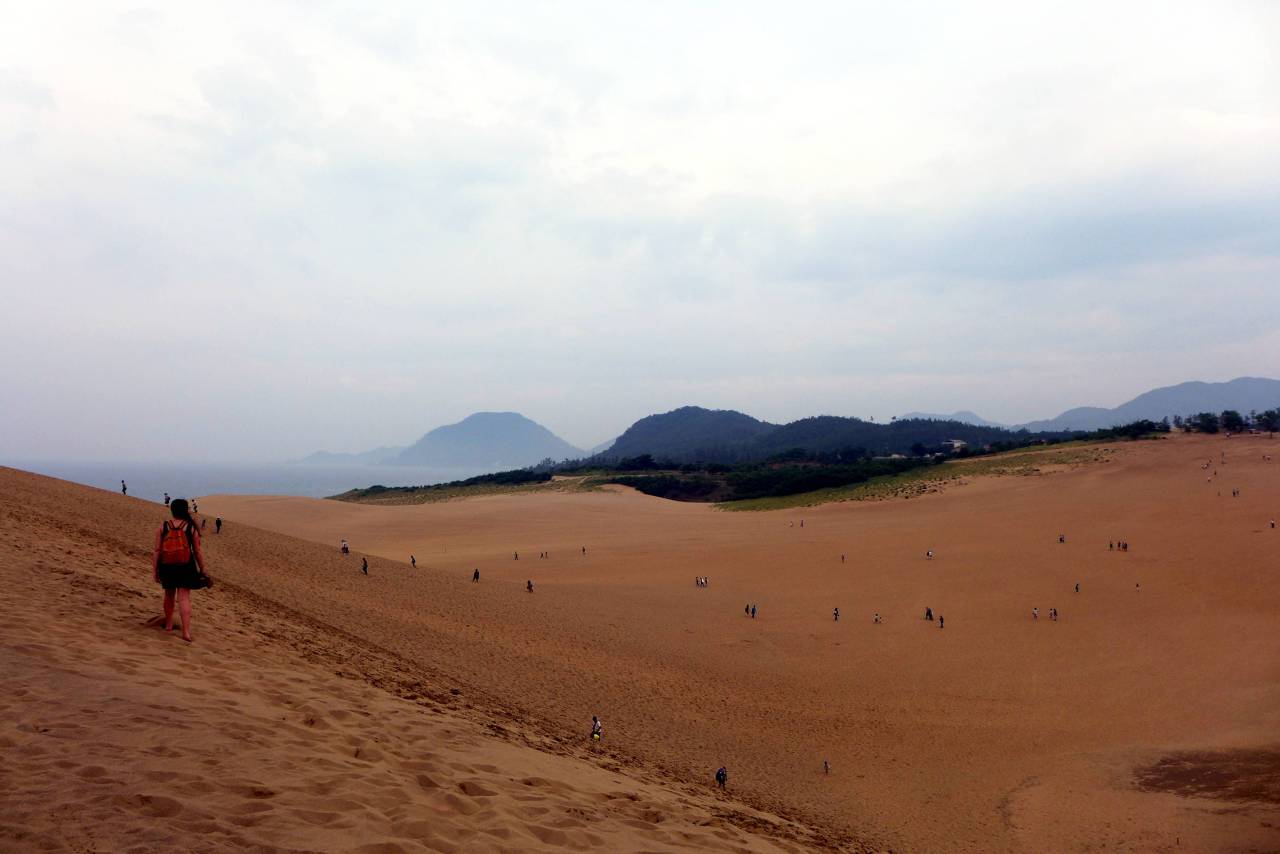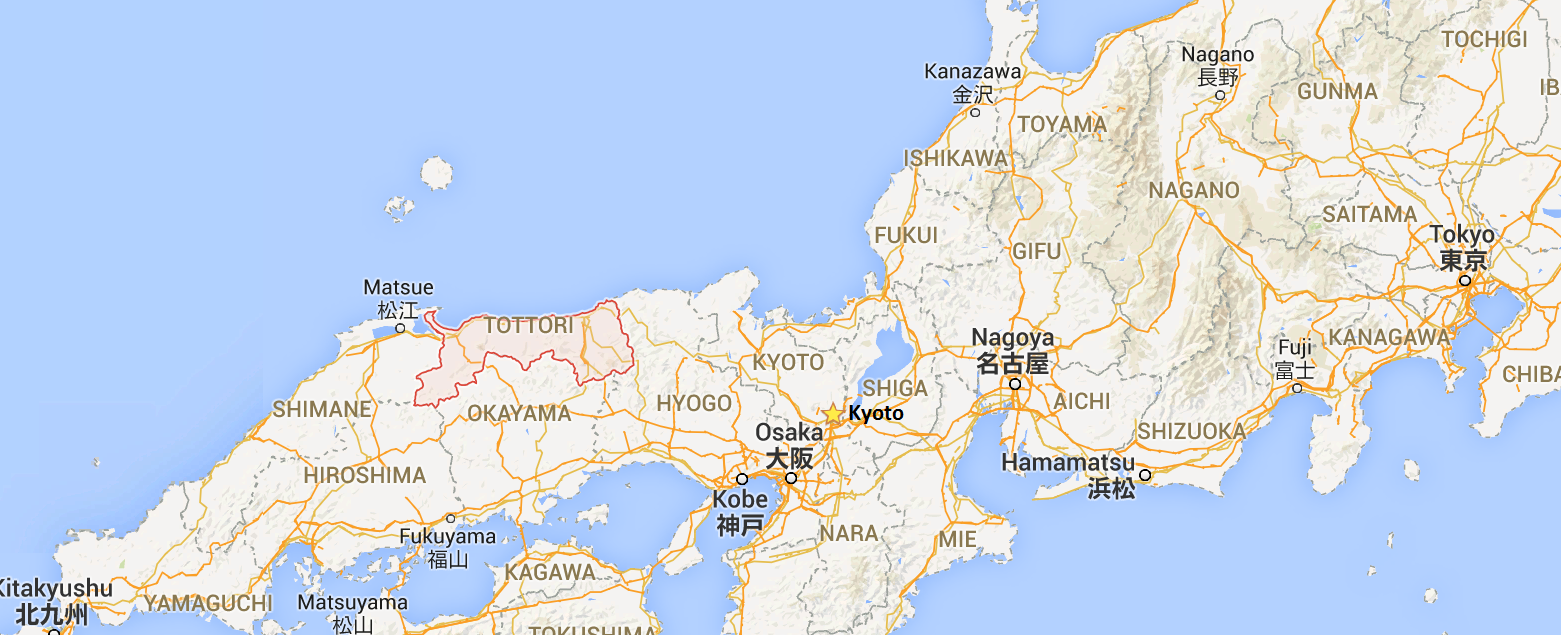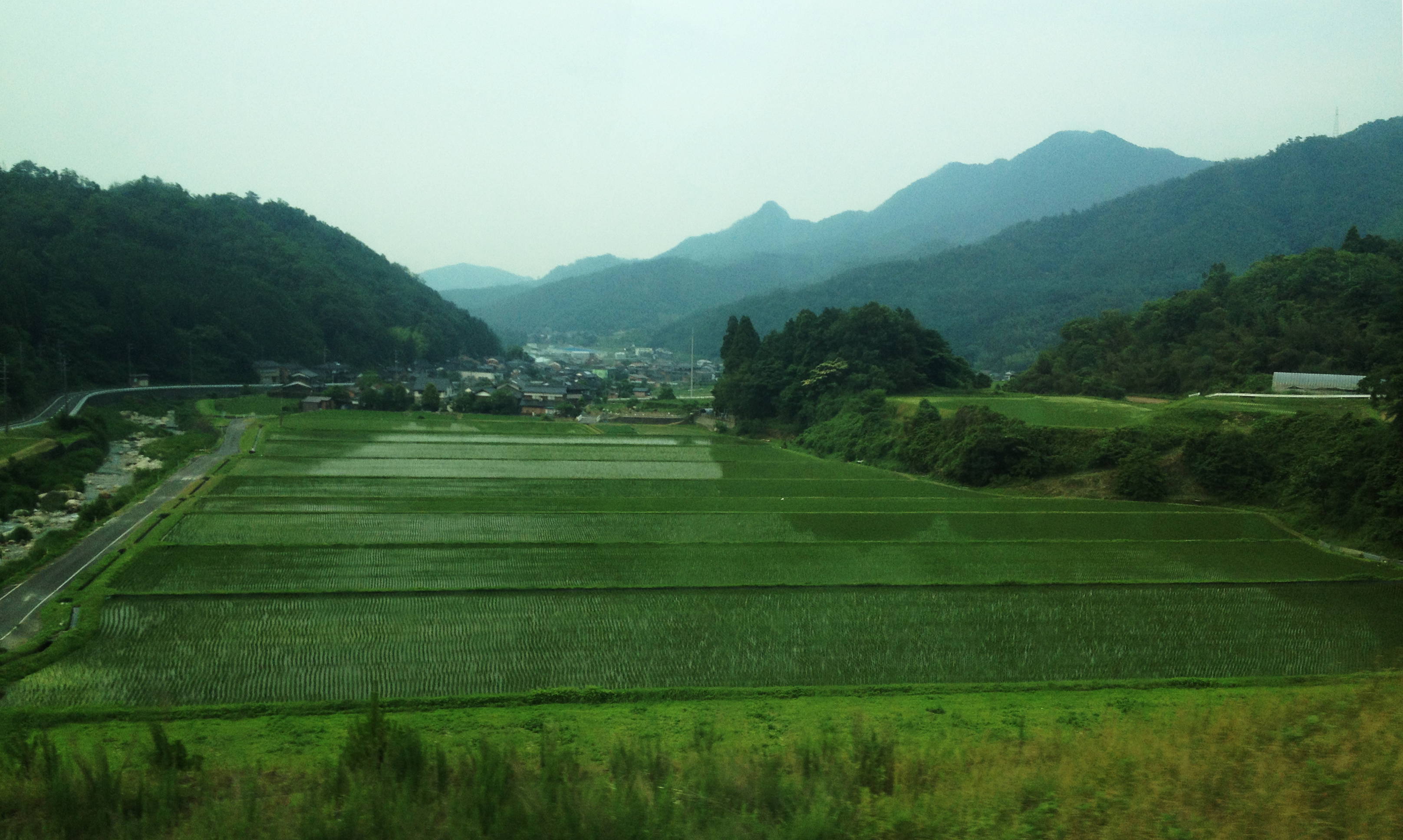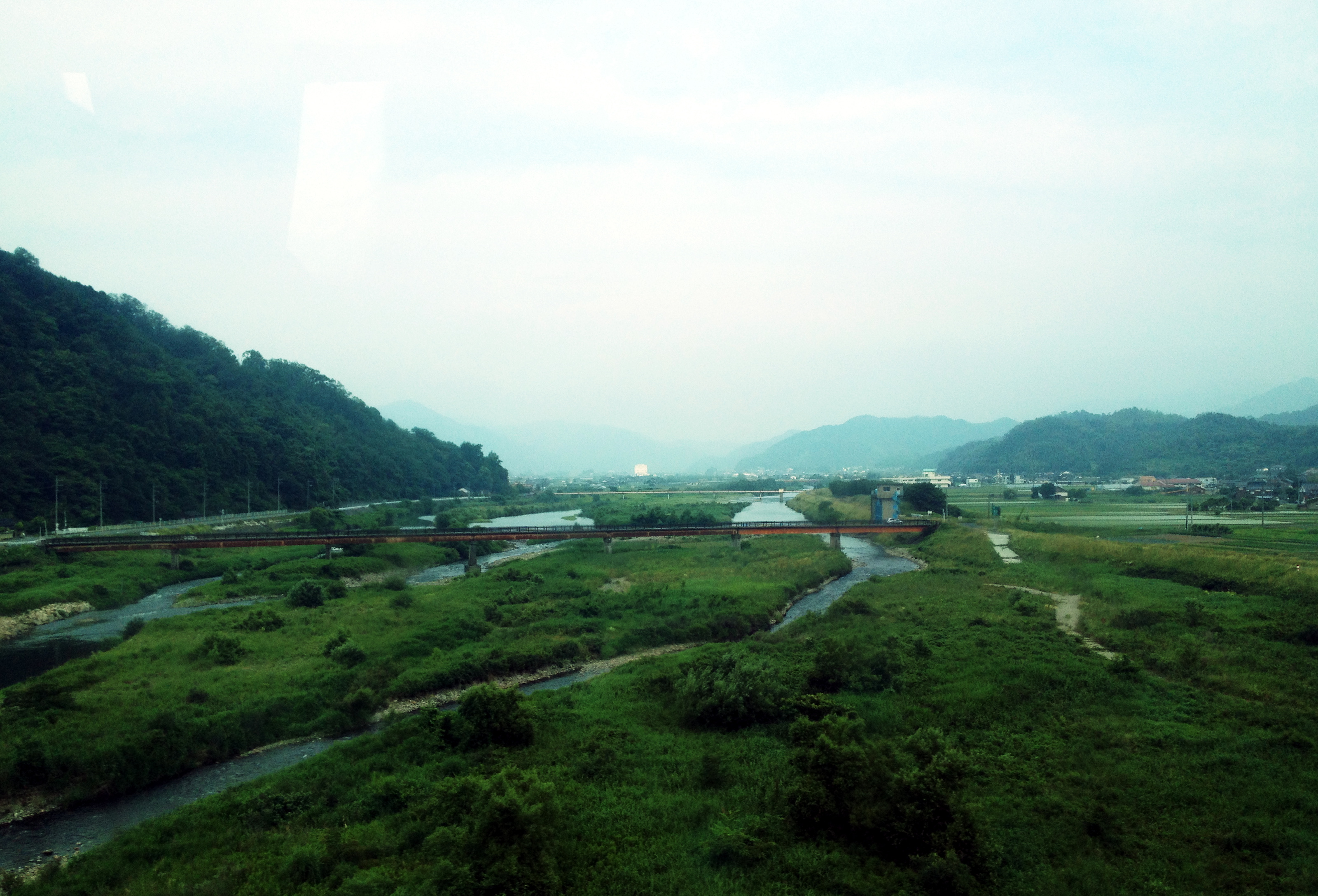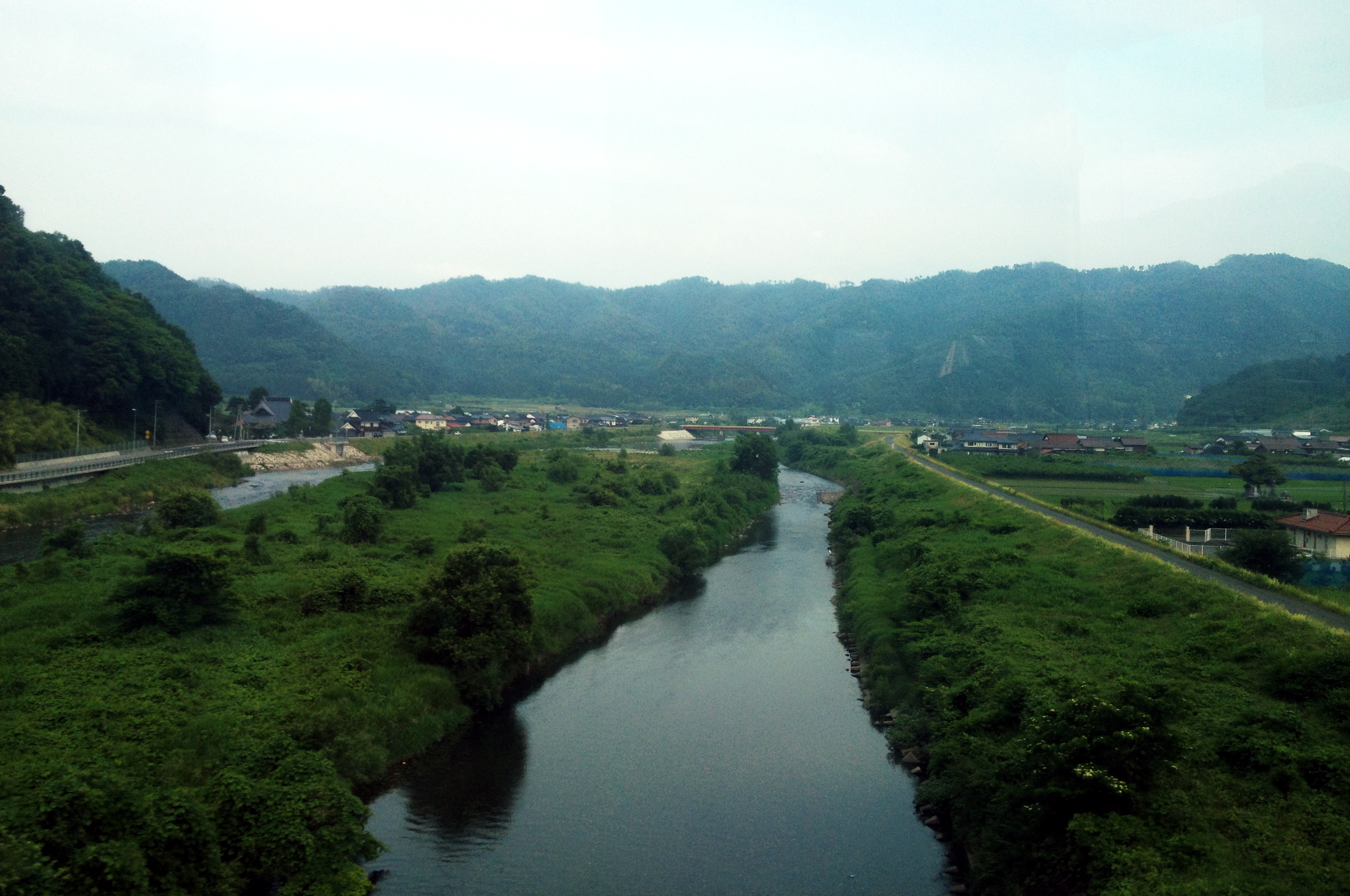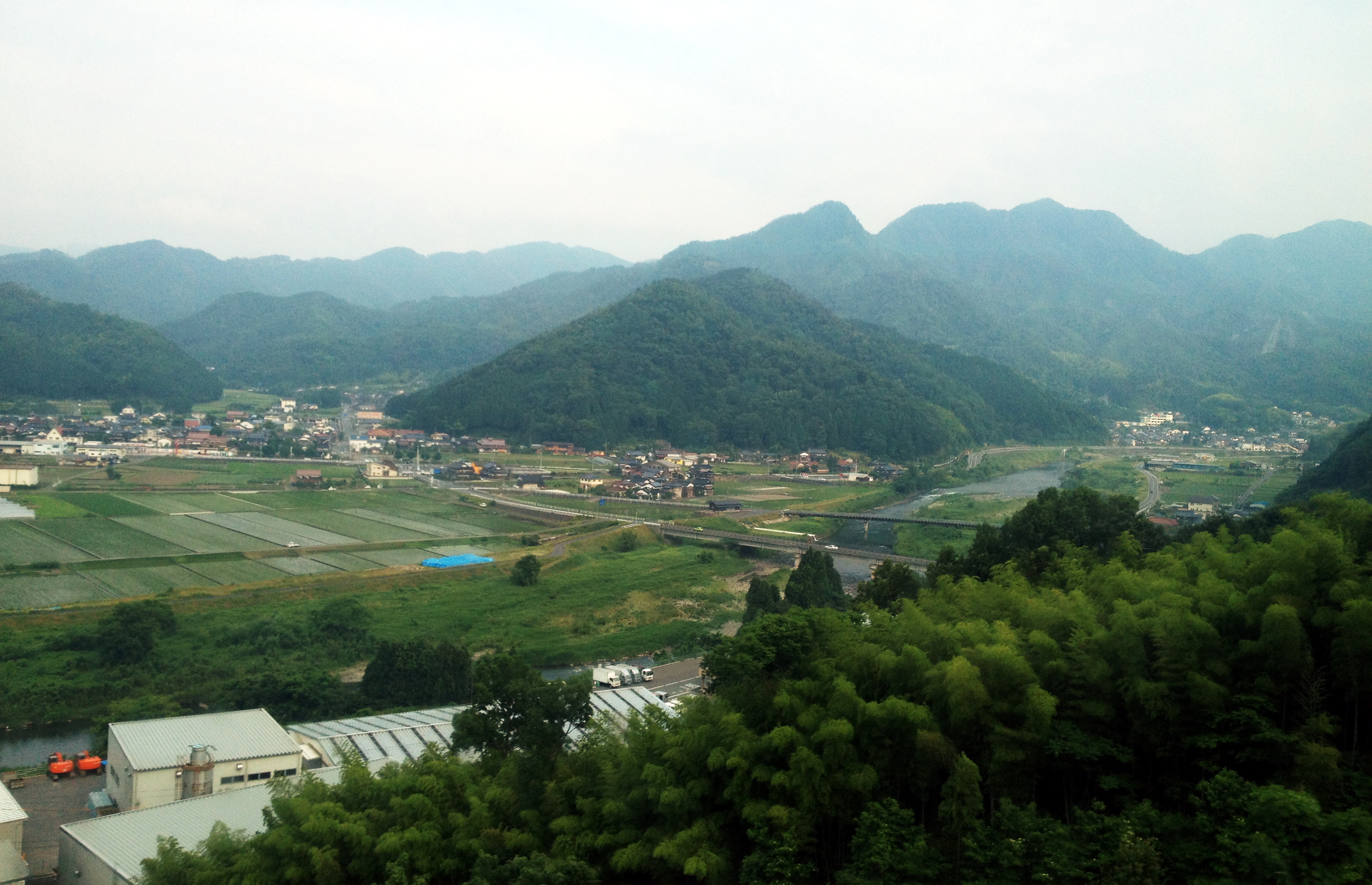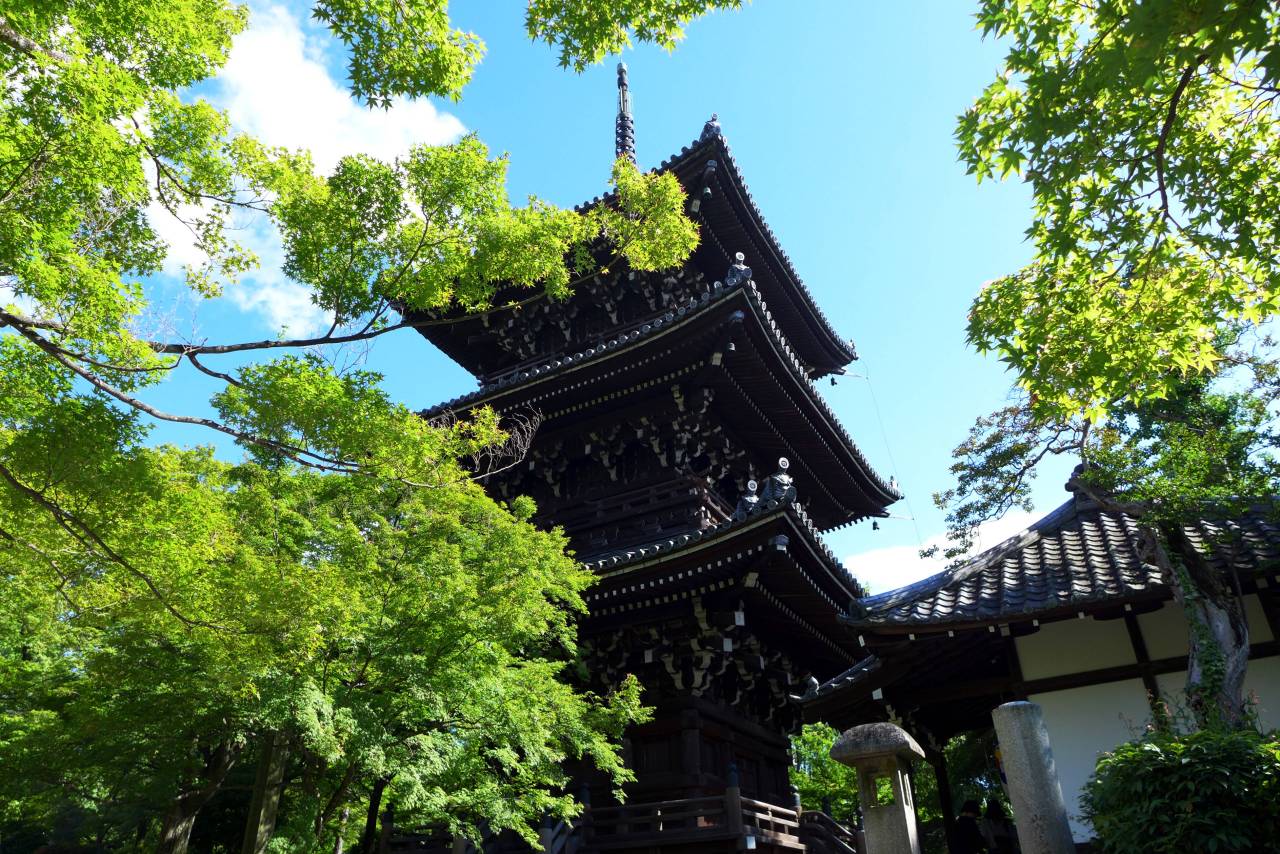Yesterday I went very far afield, travelling around 3 hours by bus to the sands of Tottori. Before coming to Japan I pictured mountains, a lot of coast, some big cities and paddy fields. I did not imagine undulating golden dunes stretching along the coast down to the sea. In fact, most Japanese wouldn’t imagine it either, as most of Japan is as one would expect, however the anomaly that is Tottori Sand Dunes does exist.
We arrived by bus at around 11:30 and first order of business was finding a temple to get a stamp for our books. Visiting a distant prefecture it only made sense to get a receipt from the gods to prove it. The closest shrine to the station I could find was Hijiri shrine 聖神社. I have found no information on the internet about its history, only that they don’t really know, even the shrine’s website has no real idea. They did not have a stamp booth either, almost dashing our hopes, but they did have a small box with a single stamp and ink pad inside it. A DIY-style stamp, but it would have to do.
The shrine itself was pretty and the architecture of the main hall was rather interesting. It was peaceful. We walked back to the station. Tottori the town wasn’t very busy and there were mountains in the distance; an ever-present backdrop to any Japanese town scene.
We stopped off for lunch at a restaurant near Tottori station. I had a sashimi assortment which was really delicious. I haven’t had sashimi in a while which made it even better. I love visiting places by the sea in Japan, Kyoto isn’t that far away but I feel like I notice seafood more when the sea is so close by.
After that we were dying to get to the dunes. We grabbed a taxi, preferring not to wait on buses as we were short of time. The taxi driver was very nice and chatted to us (all four of us are studying Japanese), he seemed pretty pleased that we could actually talk to him. The taxi journey took around 20 minutes.
We were dropped off at the sand museum. Yes, a sand museum. This is not a museum showing different types of sand or anything, but a museum showing beautiful sand sculptures. The skill that went into crafting these sculptures was incredible. Professional sand-castles to the extreme. I feel like they would make a good tv show, Extreme Sandcastling or The Sandman, a terrible MTV-style fake docu-drama reality about the struggles of a team trying to build the museum with time limits and the sand being knocked down. If they seriously have a show about making extreme cakes, I’m sure people would love one about extreme sand sculpture.
The exhibition changes annually, as the sand does eventually collapse. This year was focussing on Germany. I think they are doing the whole world country by country and Germany is their 7th exhibition. The exhibition featured tales from the Brothers Grimm, the Berlin Wall, several German castles, Bach, the Euro, German scientists, and a lot more. It was a really amazing exhibit, especially the huge castle display in the back of the hall. The detail on all the pieces was fantastic.
Once we had completed the museum we headed over to the dunes, stopping briefly for a nashi pear ice-cream. Nashi pears are a Japanese pear which is much more watery with a lighter pear taste. The ice-cream was really delicious. It is a really refreshing taste. Nashi pears are the speciality of Tottori and are grown in the prefecture.
The sand dunes were incredible, huge rolling dunes climbing skywards and then plunging down towards the sea. The sand itself was golden and soft. As it was not too hot that day we went barefoot on the sand. Well, I did eventually. I kept my shoes on for quite a long time and they got completely filled with sand. The taxi driver said on very hot days the sand is too hot to go barefoot so people borrow sand shoes from the tourist office.
On the way in we got the chance to see and ride camels! Well, we sat on the camel for a picture, to ride them around cost quite a bit and we wanted to spend more time on the dunes. It did add to the desert-vibe that the dunes give off.
We set off up the big dune to look down at the sea. Walking up the sand was a little tricky and slippery and I felt sorry for the small children climbing – for little legs it must have felt like a true mountain. At the top we joined the crowds staring down at the sea and taking pictures. Sitting on top of the dunes in the breeze, gazing down at the bright blue sea was a really magical experience. As we sat we saw a man and his dog making their way up the hill, the sand-coloured dog, though matching the area, was struggling a little with his short legs, but he did make it up the hill.
After sitting for a while we headed down to the sea; we couldn’t get so close and not go for a paddle. Going down the dunes was a bit more tricky than climbing them as the sand slid. In fact surfing the sand on boards is fairly popular in Tottori, though I did not see anyone doing it that day. We did see people paragliding down from the top of the dune to the sea which must be a fantastic experience.
Once we reached the sea I had to go in, though the waves did go a little higher than I anticipated and I got a bit wet. There were a lot of children playing in the waves though no-one was actually swimming. I suspect there was quite a rapid drop-off and it gets deep very quickly.
Tottori 鳥取 literally means ‘take bird’, and it has been settled for millennia. The reason for the bird in the name is due to people hunting the abundant waterfowl, a trade that went on for centuries. The first mention of the prefecture in writing is in the Nihon Shoki (720AD), in which an elder from Tottori prefecture comes to court and gifts the Emperor a swan. The Emperor’s son, despite being 30, is unable to speak, but when the prince played with the swan he started to speak. The Emperor was overjoyed and gave the elder many honours.
Tottori is now the least populated prefecture in Japan, and is often classed as ‘inaka’ 田舎, ‘countryside’ by Japanese. The Japanese sometimes rate inaka status by whether or not a town has a Starbucks. Until last month, Tottori city, and the whole of Tottori prefecture, was without this status symbol, but one was built last month. We went to check it out when we were near the station. Surprisingly we were not the only ones taking pictures of a Starbucks as if it were a genuine tourist attraction. Tottori is on its way up, no longer countryside!
Though Tottori may have been ‘the middle of no-where’ until last month, the dunes attract around 2 million visitors a year. The dunes are over 100,000 years old and 131 hectares. Sadly, the dunes are shrinking. Due to the construction of Tsunami barriers and other works on the river that deposits the sand, the dunes have been losing sand. The government has therefore started to weed the dunes when they show signs of reverting back to forest or grass, probably due to the tourism the dunes attract but I’d like to think it’s also because of their beauty. Pictures do not accurately portray the amazing volume of these dunes.
On our way back we ran into a spot of trouble; we had thought there was a taxi rank at the dunes and assumed allowing half an hour to get back to the bus would be okay. Turns out that there is no taxi-rank and we had to wait for a taxi after a very nice other taxi driver (who was busy) phoned around for one that could come quickly. Our saviour arrived at around 4:10 (bus was at 4:30) and he raced to get us there on time. He was great, sighing with us at every red light and happily chatting to us about how the cars in front didn’t understand how we were in a hurry. We made it with 5 minutes to spare thanks to his driving. Sadly you don’t tip drivers in Japan, because if anyone earned one it was him.
I took some pictures on my phone of the countryside on the bus on the way back. When I was little my parents would play a game when we went on car journeys; if you go through a tunnel you must try to hold your breath for the length of the tunnel. This was clearly a genius way to get us to shut up on long car journeys and keep us distracted, though I realised that in Japan you would be holding your breath the entire way. There are brief glimpses of valleys and some winding elevated roads, but as Japan is mostly mountain, there are a lot of tunnels, many stretching for several kilometers. If you were really dedicated to the game you’d turn blue.
I bought a few o-miyage in Tottori. O-miyage お土産 are presents you bring back to give to your friends and family, usually food. Each region and town has a speciality fruit, sweet, flavour or other food, so you bring back something flavoured with the speciality. I bought some nashi pear flavoured wafers for my class (which went down great today) as well as some treats for myself: honey-butter with nashi flavour, a chu-hai (alcoholic drink) flavoured with Nashi, and some daifuku rice cake bunny-shaped sweets flavoured with nashi (delicious). I also had a nasi gelato on my way back from the dunes, really delicious. I really like the nashi pear flavour, makes me wish that Kyoto was famous for it.
I had a wonderful trip to Tottori and I would really recommend it to those that want to experience something really different about Japan. For me it was a perfect day and it really showed me that there is so much more to Japan than what you would expect. Bonus relaxing dog in the souvenir shop:

